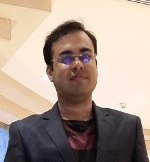ADVISORY ARTICLE
By Ajay Shenoy
Bangalore, India
Summary
Most software companies claim to have implemented agile methodologies. However, there are some common pitfalls and myths about agile. Many Software development teams think they are agile. They would have been working in small iterations and would have ranked a backlog with product teams to build a workable solution at end of the iteration. Many teams believe implementing Scrum is agile or implementing Scrum Ceremonies/Agile Artifacts is being Agile
Here are some common myths about agile below which I have seen about agile.
People think Scrum is agile
People often think scrum and agile are the same thing as scrum is around continuous development, which is one of the core principle of agile. Scrum is a framework and whereas agile is a mindset. Agile software development refers to group of software development methodologies based on iterative development where requirements and solutions are progressively evolved through collaboration between self-organizing cross-functional teams. Agile development refers to any development process, which is aligned with the concepts of the Agile Manifesto. The Agile manifesto was written in 2001 by seventeen independent-minded software practinoners.
Being Agile Doesn’t Mean there is No Plan
Being agile is a goal toward every day. Too many waterfall projects failed because they did too much planning and likewise agile projects failed because they had less planning.
Yes, Agile Projects fail when they don’t plan. And yes, Agile Projects need a plan.
Now by planning, I do not mean a spreadsheet document with 500 rows with tasks and dependencies, baselines and status of each with start and end dates. Agile projects start with lesser upfront planning and we progressively plan as we uncover more information. However, we would start with ballpark solutions with plan and estimates. However, none of the plan will be a refined plan like what we would have in waterfall project. This means we stay flexible when we are confronted with challenges, and we embrace and adapt to the change and we are open to new ideas and solutions. We are flexible, but this does not mean we do not have a plan.
Reporting Agile projects through waterfall mechanism
Agile expects senior leaders and sponsors to spend more time on the project than off it. This means to spend time in sprint planning sessions, to ensure the requirements are understood, attending them tells to ensure what is being delivered to meet expectations and regular touch base with the team to provide continuous feedback.
More…
To read entire article, click here
How to cite this article: Shenoy, A. (2019). Common Misconceptions about Agile, PM World Journal, Vol. VIII, Issue X, November. Available online at https://pmworldlibrary.net/wp-content/uploads/2019/11/pmwj87-Nov2019-Shenoy-common-misconceptions-about-agile.pdf
About the Author

Ajay Shenoy
Bangalore, India
![]()
Ajay Shenoy, a certified Scrum Professional and Agile Coach, has been involved in Technology Solutioning since 2007. He started working as a Solution Engineer and slowly incorporated into a technical program manager. He is a Certified Scrum Professional and has good knowledge on Prince2, Agile, Lean, Scrum, Kanban and SAFe frameworks. Along with expertise in Project management, he has deep interest in Technology side. With these skills, Ajay can help people understand process as well as Agile. Ajay has a perfect blend of project management with technical skills and business acumen.
Ajay started his Agile journey in 2012, as part of engineering teams. He practiced scrum and other agile frameworks in delivering successful products within limited time frames. Ajay is proficient in Engineering practices such as Scrum, Lean Software development, and Kanban and has designed several solutions and market rollouts working with product/services companies. He believes in following key agile practices like Just In Time, Value Stream mapping, Refactoring, Improving lead and cycle time.
He single handedly built a group comprised of 700 employees with different skills/roles. He indulges in several meets/ conferences and sharing knowledge on public platforms like linkedIn with reference to Agile. Ajay has coached/trained several teams in different organizations; he was part of an agile team to improve an existing framework.
He has a Master’s degree in IT & Finance and is currently based out of Bangalore.
You can reach him on his email @ shenoyajay82@yahoo.com.









